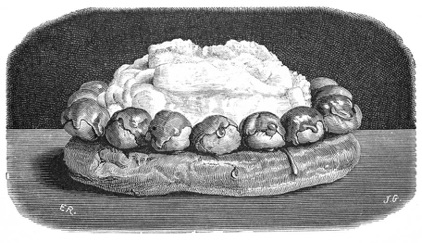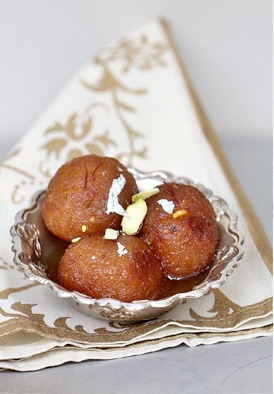The Dessert Dictionary Project



















ganache France
A mixture of equal parts cream and chocolate used as a base for chocolate candy such as truffles or as a frosting for cakes and other pastries. In some cases the cooled mixture is beaten to lighten it. In Austria, this whipped ganache is referred to as Pariser Creme.
gâteau France
“Gâteau” is most commonly translated as cake but the term means both more and less than this. There are gâteaux that do indeed resemble what English-speakers would recognize as a cake, but others are more like a complex pastry, see for example the gâteau Saint-Honoré (below). A petit gâteau might be well be a small cake such as a madeleine but it is equally likely to be a cookie, or in contemporary usage, even a muffin or cupcake.
gâteau moka France
A multi-layered cake made with very thin layers of vanilla sponge and coffee-flavored buttercream. According to the nineteenth century pastry authority Pierre Lacam, the cake was invented by a pastry cook by the name of Guignard in 1857.
gâteau Saint-Honoré France
A crown-like pastry creation made by piping pâte à choux around the circumference of a round of tart pastry. Once baked the cream puffs are partially coated with caramel and the center filled with crème Chiboust (custard lightened with meringue) or more commonly, custard lightened with whipped cream.

The invention of the cake is widely credited to the Julien brothers who ran a pastry shop in Paris in the first part of the nineteenth century. It’s worth noting that early versions of the gâteau Saint-Honoré were occasionally made with brioche, some were filled with whipped cream only, and others with a Bavarian cream (set with gelatin).
génoise France
gingerbread United Kingdom, pain d’épice France, Lebkuchen Austria/Germany, speculaas Netherlands

gulab jamun South Asia

photo Deeba Rajpal
güllaç Turkey
coming soon
halva (also halvah & halwa) Middle East/South Asia
Hobelspänen Austria/Germany
hot cross buns UK
Sweet spiced yeast buns flavored with candied fruit and decorated with a cross (usually made of a sugar glaze) traditional for Good Friday in Britain. They are now available throughout the Lenten season. They have been common since at least the 18th century. The first reference I have been able to find is in The Connoisseur (1755). The author, who styles himself “Mr. Town,” writes “We are to have a grand route [party] here upon Good-Friday; and I would advise you to get down into the kitchen among the maids, where you may shew [sic] your regard for the day, by feasting them with Bohea [black tea] of six shillings a pound and hot cross buns.” (360)